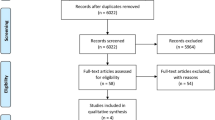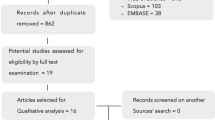Abstract
The choice of implant surface has a significant influence on osseointegration. Modification of TiZr surface by anodization is reported to have the potential to modulate the osteoblast cell behaviour favouring more rapid bone formation. The aim of this study is to investigate the effect of anodizing the surface of TiZr discs with respect to osseointegration after four weeks implantation in sheep femurs. Titanium (Ti) and TiZr discs were anodized in an electrolyte containing dl-α-glycerophosphate and calcium acetate at 300 V. The surface characteristics were analyzed by scanning electron microscopy, electron dispersive spectroscopy, atomic force microscopy and goniometry. Forty implant discs with thickness of 1.5 and 10 mm diameter (10 of each-titanium, titanium–zirconium, anodized titanium and anodized titanium–zirconium) were placed in the femoral condyles of 10 sheep. Histomorphometric and histologic analysis were performed 4 weeks after implantation. The anodized implants displayed hydrophilic, porous, nano-to-micrometer scale roughened surfaces. Energy dispersive spectroscopy analysis revealed calcium and phosphorous incorporation into the surface of both titanium and titanium–zirconium after anodization. Histologically there was new bone apposition on all implanted discs, slightly more pronounced on anodised discs. The percentage bone-to-implant contact measurements of anodized implants were higher than machined/unmodified implants but there was no significant difference between the two groups with anodized surfaces (P > 0.05, n = 10). The present histomorphometric and histological findings confirm that surface modification of titanium–zirconium by anodization is similar to anodised titanium enhances early osseointegration compared to machined implant surfaces.






Similar content being viewed by others
References
Sharma A, McQuillan AJ, Sharma LA, Waddell JN, Shibata Y, Duncan WJ. Spark anodization of titanium–zirconium alloy: surface characterization and bioactivity assessment. J Mater Sci Mater Med. 2015;26(8):1–11.
Duncan W, Lee M, Dovban A, Hendra N, Ershadi S, Rumende H. Anodization increases early integration of Osstem implants in sheep femurs. Ann R Australas Coll Dent Surg. 2008;19:152–6.
Park IS, Lee MH. Effects of anodic spark oxidation by pulse power on titanium substrates. Surf Interface Anal. 2011;43(7):1030–7.
Park KH, Heo SJ, Koak JY, Kim SK, Lee JB, Kim SH, et al. Osseointegration of anodized titanium implants under different current voltages: a rabbit study. J Oral Rehabil. 2007;34(7):517–27.
Shibata Y, Kawai H, Yamamoto H, Igarashi T, Miyazaki T. Antibacterial titanium plate anodized by being discharged in NaCl solution exhibits cell compatibility. J Dent Res. 2004;83(2):115–9.
Suh JY, Jang BC, Zhu X, Ong JL, Kim K. Effect of hydrothermally treated anodic oxide films on osteoblast attachment and proliferation. Biomaterials. 2003;24(2):347–55.
Sul Y-T, Johansson C, Byon E, Albrektsson T. The bone response of oxidized bioactive and non-bioactive titanium implants. Biomaterials. 2005;26(33):6720–30.
Park IS, Lee MH, Bae TS, Seol KW. Effects of anodic oxidation parameters on a modified titanium surface. J Biomed Mater Res B. 2008;84(2):422–9.
Sul Y-T. The significance of the surface properties of oxidized titanium to the bone response: special emphasis on potential biochemical bonding of oxidized titanium implant. Biomaterials. 2003;24(22):3893–907.
Zhu X, Chen J, Scheideler L, Reichl R, Geis-Gerstorfer J. Effects of topography and composition of titanium surface oxides on osteoblast responses. Biomaterials. 2004;25(18):4087–103.
Zhu X, Kim K-H, Jeong Y. Anodic oxide films containing Ca and P of titanium biomaterial. Biomaterials. 2001;22(16):2199–206.
Le Guéhennec L, Soueidan A, Layrolle P, Amouriq Y. Surface treatments of titanium dental implants for rapid osseointegration. Dent Mater. 2007;23(7):844–54.
Gottlow J, Barkarmo S, Sennerby L. An experimental comparison of two different clinically used implant designs and surfaces. Clin Implant Dent Relat Res. 2012;14(Suppl 1):e204–12.
Sul YT, Johansson C, Albrektsson T. Which surface properties enhance bone response to implants? Comparison of oxidized magnesium, TiUnite, and Osseotite implant surfaces. Int J Prosthodont. 2006;19(4):319–28.
Kobayashi E, Matsumoto S, Doi H, Yoneyama T, Hamanaka H. Mechanical properties of the binary titanium-zirconium alloys and their potential for biomedical materials. J Biomed Mater Res. 1995;8(29):943–50.
Gottlow J, Dard M, Kjellson F, Obrecht M, Sennerby L. Evaluation of a new titanium-zirconium dental implant: a biomechanical and histological comparative study in the mini pig. Clin Implant Dent Relat Res. 2012;14(4):538–45.
Barter S, Stone P, Bragger U. A pilot study to evaluate the success and survival rate of titanium-zirconium implants in partially edentulous patients: results after 24 months of follow-up. Clin Oral Implants Res. 2012;7(23):873–81.
Bernhard N, Berner S, De Wild M, Wieland M. The binary TiZr alloy—a newly developed Ti alloy for use in dental implants. Forum Implantol. 2009;5:30–9.
Branemark PI, Hansson BO, Adell R, Breine U, Lindstrom J, Hallen O, et al. Osseointegrated implants in the treatment of the edentulous jaw. Experience from a 10-year period. Scand J Plast Reconstr Surg Suppl. 1977;16:1–132.
Jokstad A. Oral implants—the future. Aust Dent J. 2008;53:S89–93.
Littell RC, Henry PR, Ammerman CB. Statistical analysis of repeated measures data using SAS procedures. J Anim Sci. 1998;76(4):1216–31.
Giavaresi G, Fini M, Cigada A, Chiesa R, Rondelli G, Rimondini L, et al. Mechanical and histomorphometric evaluations of titanium implants with different surface treatments inserted in sheep cortical bone. Biomaterials. 2003;24(9):1583–94.
Choi JY, Jung UW, Lee IS, Kim CS, Lee YK, Choi SH. Resolution of surgically created three-wall intrabony defects in implants using three different biomaterials: an in vivo study. Clin Oral Implants Res. 2011;22(3):343–8.
Botticelli D, Berglundh T, Lindhe J. Resolution of bone defects of varying dimension and configuration in the marginal portion of the peri-implant bone. J Clin Periodontol. 2004;31(4):309–17.
Jung U-W, Moon H-I, Kim CS, Lee YK, Kim C-K, Choi S-H. Evaluation of different grafting materials in three-wall intra-bony defects around dental implants in beagle dogs. Curr Appl Phys. 2005;5(5):507–11.
Kim C-S, Choi S-H, Chai J-K, Cho K-S, Moon I-S, Wikesjö UM, et al. Periodontal repair in surgically created intrabony defects in dogs: influence of the number of bone walls on healing response. J Periodontol. 2004;75(2):229–35.
Berglundh T, Abrahamsson I, Lang NP, Lindhe J. De novo alveolar bone formation adjacent to endosseous implants. Clin Oral Implants Res. 2003;14(3):251–62.
Park JW, Kim HK, Kim YJ, An CH, Hanawa T. Enhanced osteoconductivity of micro-structured titanium implants (XiVE S CELLplus) by addition of surface calcium chemistry: a histomorphometric study in the rabbit femur. Clin Oral Implants Res. 2009;20(7):684–90.
Davies JE. Understanding peri-implant endosseous healing. J Dent Educ. 2003;67(8):932–49.
Davies JE. Bone bonding at natural and biomaterial surfaces. Biomaterials. 2007;28(34):5058–67.
Colon G, Ward BC, Webster TJ. Increased osteoblast and decreased Staphylococcus epidermidis functions on nanophase ZnO and TiO2. J Biomed Mater Res A. 2006;78(3):595–604.
Webster TJ, Ejiofor JU. Increased osteoblast adhesion on nanophase metals: Ti, Ti6Al4V, and CoCrMo. Biomaterials. 2004;25(19):4731–9.
Webster TJ, Schadler LS, Siegel RW, Bizios R. Mechanisms of enhanced osteoblast adhesion on nanophase alumina involve vitronectin. Tissue Eng. 2001;7(3):291–301.
Yao C, Perla V, McKenzie JL, Slamovich EB, Webster TJ. Anodized Ti and Ti 6 Al 4V possessing nanometer surface features enhances osteoblast adhesion. J Biomed Nanotechnol. 2005;1(1):68–73.
Sista S, Wen C, Hodgson PD, Pande G. The influence of surface energy of titanium-zirconium alloy on osteoblast cell functions in vitro. J Biomed Mater Res A. 2011;1(97A):27–36.
Bornstein MM, Valderrama P, Jones AA, Wilson TG, Seibl R, Cochran DL. Bone apposition around two different sandblasted and acid-etched titanium implant surfaces: a histomorphometric study in canine mandibles. Clin Oral Implants Res. 2008;19(3):233–41.
Acknowledgments
This study was funded by Dentsply, Australia and Lottery Health Research Grant, New Zealand. We wish to acknowledge the assistance of Liz Girwan, Otago Centre for Electron Microscopy, University of Otago, for her assistance in the SEM. We wish to acknowledge the assistance of Andrew McNaughton, Otago Centre for Confocal Microscopy, University of Otago, for his assistance in the confocal microscopy. We acknowledge the assistance of Dave Mathews, Hercus Taieri Research Unit for his assistance in animal surgeries.
Author information
Authors and Affiliations
Corresponding author
Ethics declarations
Conflict of interest
We the authors of this manuscript declare that there is no potential conflict of interest with respect to the authorship and/or publication of this article.
Rights and permissions
About this article
Cite this article
Sharma, A., McQuillan, A.J., Shibata, Y. et al. Histomorphometric and histologic evaluation of titanium–zirconium (aTiZr) implants with anodized surfaces. J Mater Sci: Mater Med 27, 86 (2016). https://doi.org/10.1007/s10856-016-5695-4
Received:
Accepted:
Published:
DOI: https://doi.org/10.1007/s10856-016-5695-4




